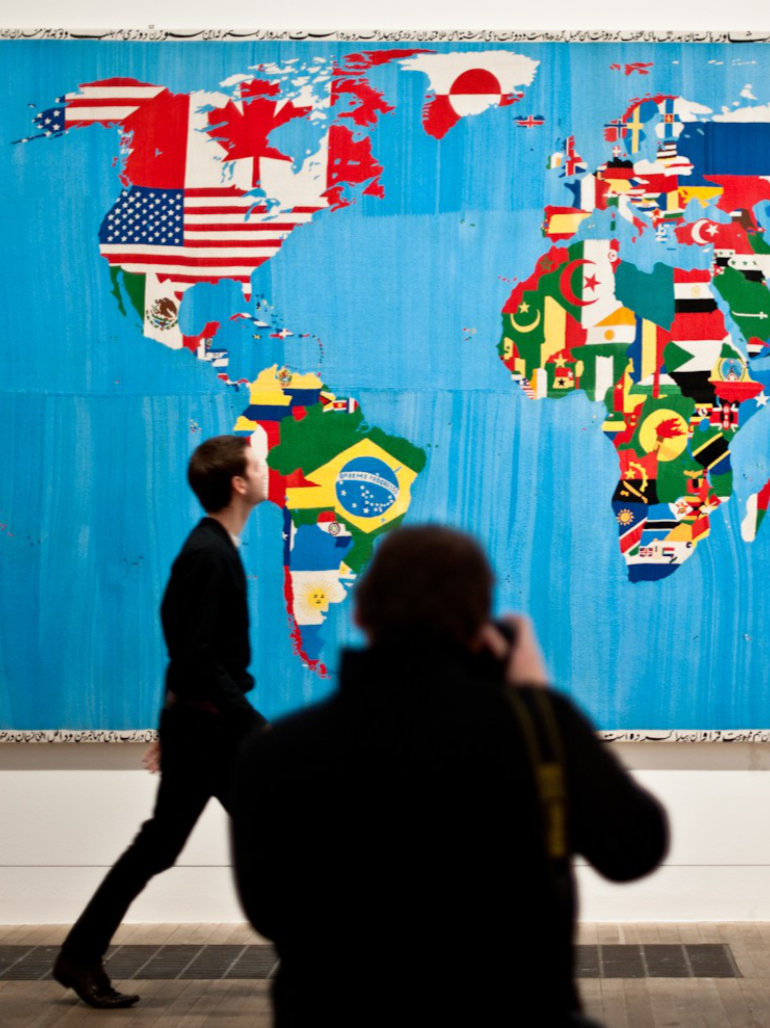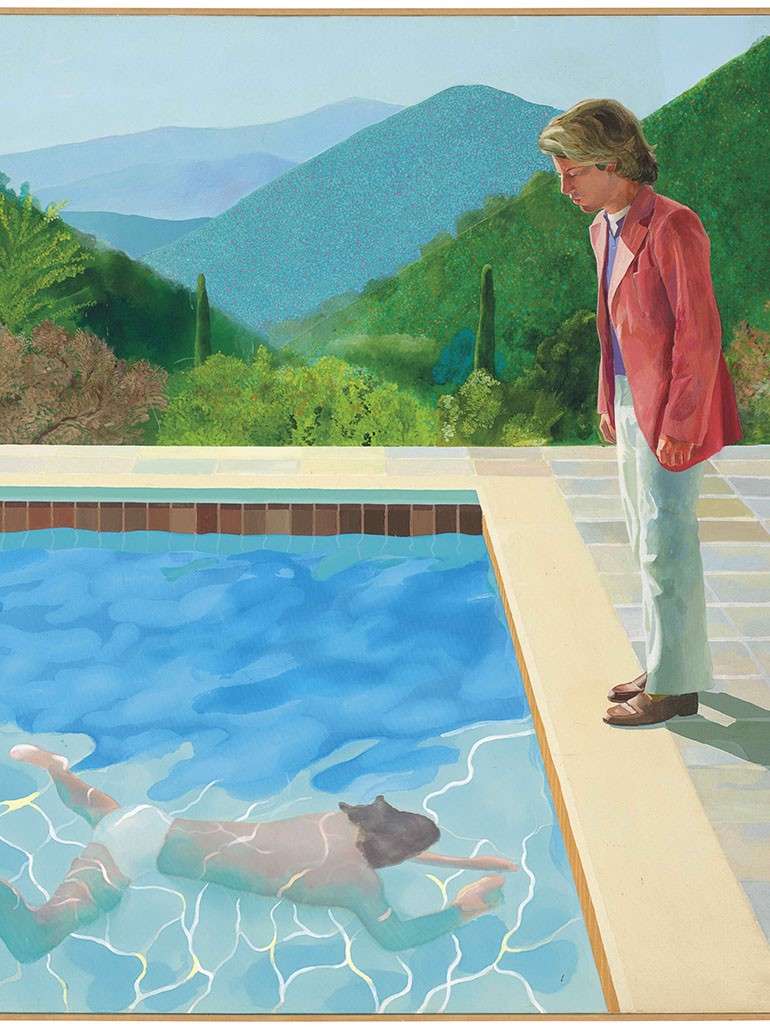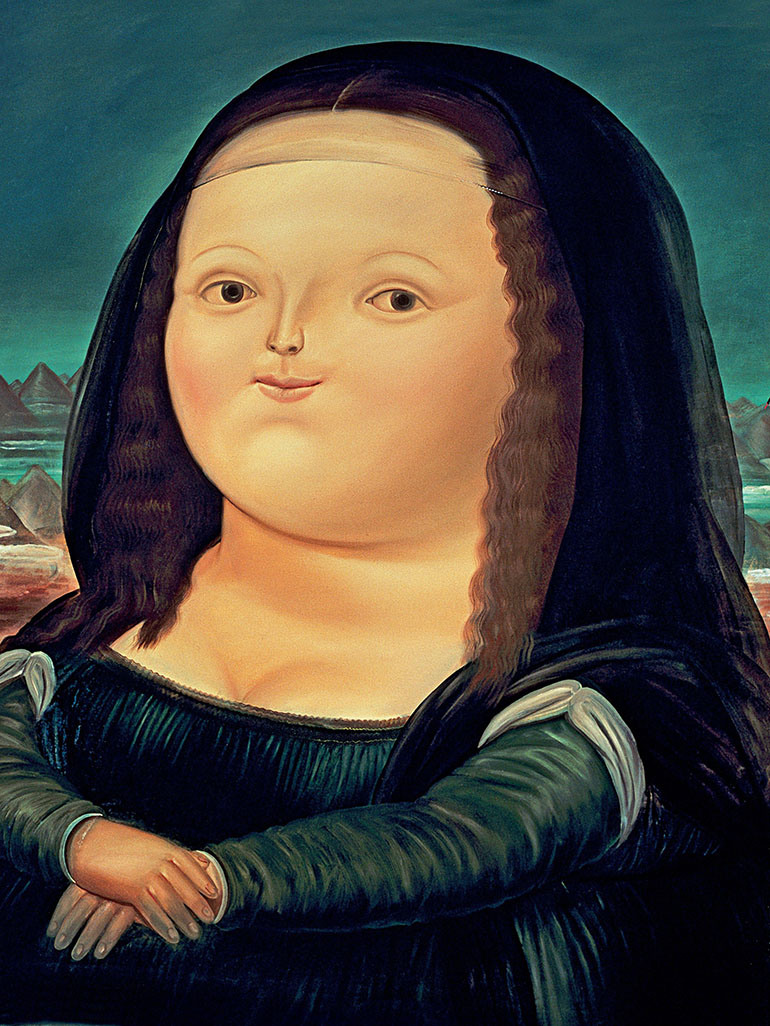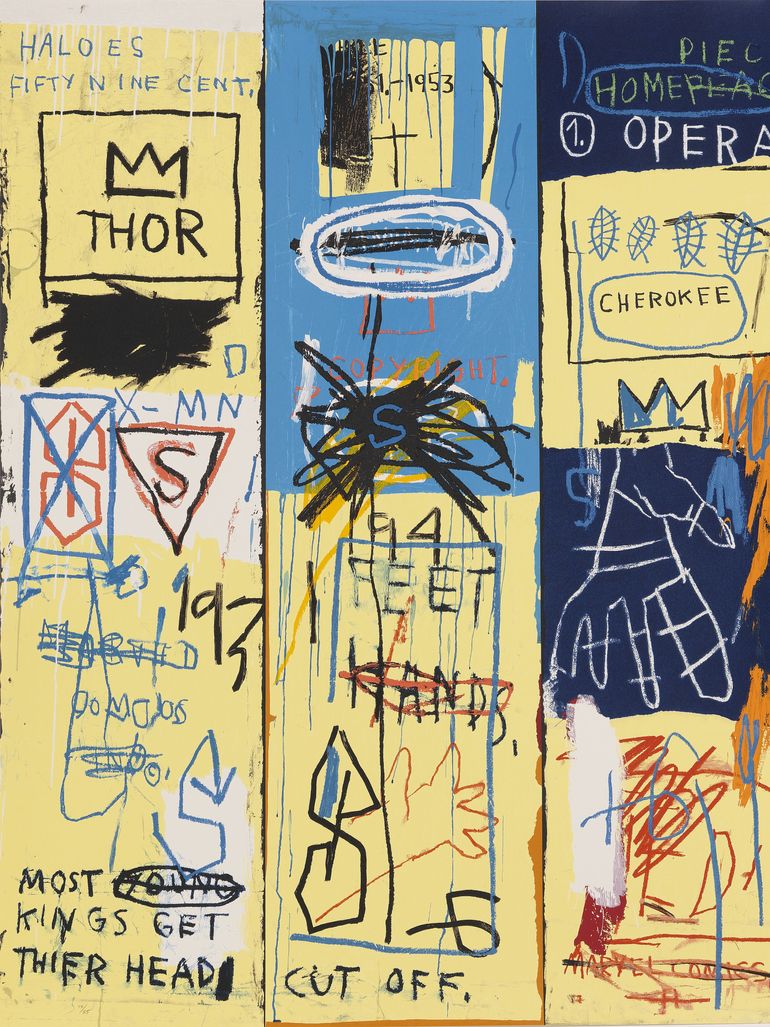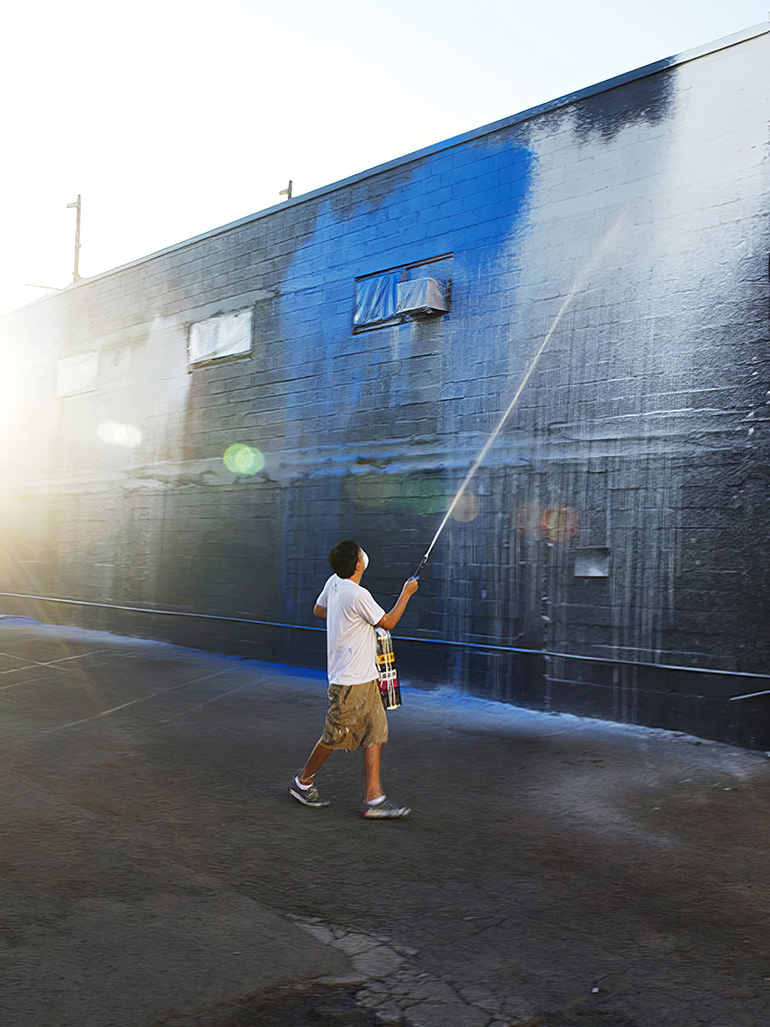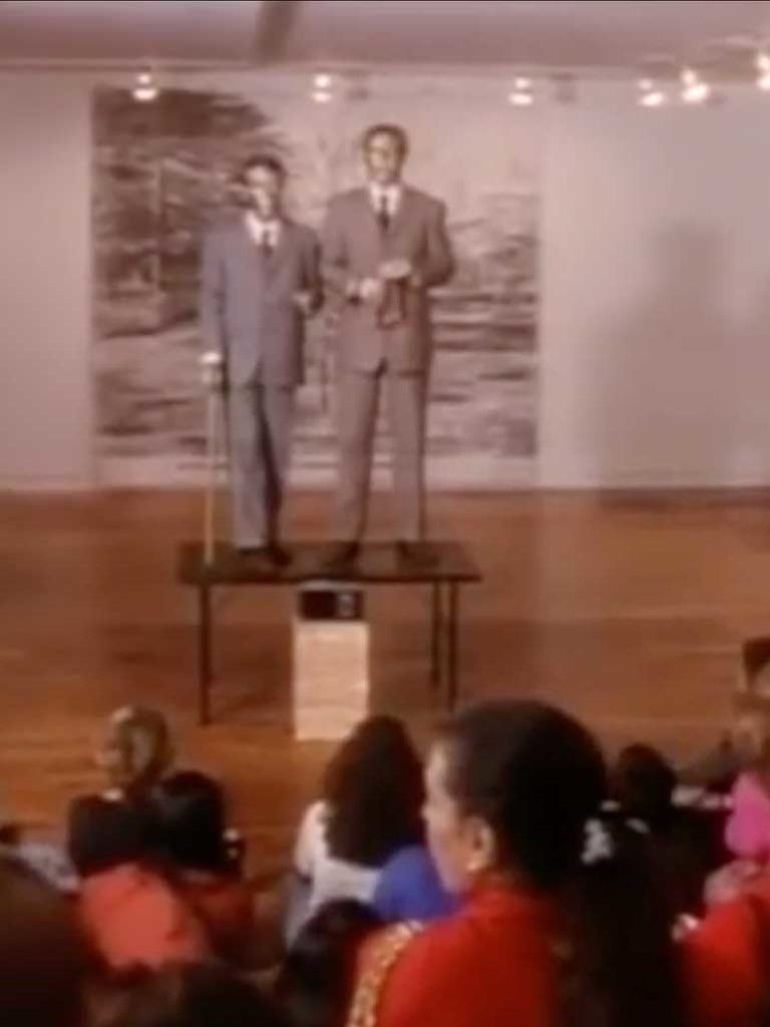Damien Hirst’s Spot Paintings
Damien Hirst is one of the most successful and controversial artists and has been dominating the British art scene since the 1990s. Though he became famous through a series of artworks centered on the death motif, the Spot Paintings have become his signature. His spots are easily recognizable and widely sought after by art collectors.
The spot paintings are among Damien Hirst’s most recognizable and popular works. In total, Damien has created 13 subseries of paintings that exist within the spots category. Of all the 13 spot paintings ever created, the Pharmaceutical series is the first and most prolific. So far, there are over 1,000 pharmaceutical paintings in existence that date back all the way from 1986 to 2011.
Having created a successful career for himself due to his highly lucrative spot paintings, Hirst does not actually do most of the painting himself. Of the 1,400 spot paintings currently in existence today, Hirst is only credited with painting five of them, which has caused controversy for the artist and his team.
The first spot painting & The idea behind it
Hirst grew up during the era of abstract expressionism. Therefore, he appreciated prominent artworks of abstract expressionists, including Rothko and Pollock. When he was still figuring out his style, he worked with contempt and fascination for the coldness of contemporary minimalism that he witnessed at the Tate Museum back then.
David Hirst created his very first spot painting while he was still a student in 1986 at London’s Goldsmiths College. He felt that he failed at his first attempts, which made him hate his early paintings, shunning the free-from spots for the grid that became synonymous with his brand.
It was not until 1988 that he made his work public with his first piece, which he titled Freeze. Today, there are about 1000 spot paintings in the world of different sizes, shapes, and colors.
He later discovered that he was wrong about minimalism being disconnected and cold. Despite being stimulated by the painter’s emotion, like in abstract expressionism, the audience is stimulated by the lack of it as an individual.
Using the colors that leap from the canvas and others that fade, the spot paintings are deliberately poised to directly pop at the viewer, allowing Hirst to fully harness the effect that he intended to have on the audience.
Description of the Spot Paintings
Some of the circles are as big as 40 inches wide, while others are just a few inches. They are neat and flatly painted with white backgrounds and cover canvases small and large in constant grids.
One painting contains half a dot while others have up to four. The small ones seem more interesting to the viewer since they resemble dot candy, while the large ones remind of Twister game boards.
The viewer’s eyes optically follow the black dots in a bid to find something to latch on to. No two circles touch and no color occurs more than once on the same canvas, though some are close to being the same tone. This is the rule included in Hirst’s collection – no repeated colors and every spot should be the same size as each other.
Hirst made his first spot painting in 1986 on a wooden board, taking it public at Freeze in 1988. He recalls1:
My first ever Spot Painting (1986) was loose and painted with drippy paint, not minimal at all. In that first painting, I was wrestling with what I originally thought of as the coldness of minimalism and the more emotional, abstract expressionist painting style I’d grown up with. At the time I painted it, it felt uncool and I abandoned it immediately for the rigidity of the grid, removing the mess, but after doing the Spot catalog raisonné, I’ve felt really drawn to that first painting and knew I’d revisit it eventually – maybe it is because I’m getting older. I realized I was wrong about minimalism – the simplest, cleanest thing can provoke an emotional response – but the Spot Paintings still play with that idea’ despite the grid, they always look happy, although there’s an unease there too because the colors don’t repeat when you expect them to.
His earliest paintings are at the Madison Avenue gallery in New York City. As he described them, they have a crowded, rhythmic, yet inviting look, resembling the 1960s work of Bernard Cohen. They were a bit like take-it-or-leave-it paintings.
Spot Paintings technique
In Hirst’s first Spot Paintings, executed in 1986, we can see many colored spots placed next to each other that create a colorful pattern. It seems he enjoyed this technique so much because he produced around similar 90 spot paintings.
The paintings adhere to composition rules that require each spot to be hand-painted, have the same color as the next spot, and be acrylic colored. The inspiration for this technique is not certain, though, as Hirst himself said2:
To create that structure, to do those colors, and do nothing. I suddenly what I wanted. It was just a way of pinning down the joy of color.
Video: Assistants without talent & having $300 million
The Spot Challenge
On January 12, 2012, Damien Hirst’s show The Complete Spot Paintings was opened in all 11 locations of the Gagosian Gallery, including New York, London, Paris, Los Angeles, Rome, Athens, Geneva and Hong Kong.
The exhibition ran to February 18, marking the first time Larry Gagosian dedicated his entire gallery to a single artist. More than 150 private collectors and public institutions from twenty countries provided their paintings to create this single exhibition in different countries.
Regarded as a single art show but in different geographical locations, The Complete Spot Paintings 1986-2011 used that demographic fact to determine the content of each exhibition according to locality.
More than 300 paintings were shown, from the first spot, created by Hirst in 1986, to the smallest spot painting comprising half a spot and measuring 1 x 1/2 inch (1996); to a monumental work comprising only four spots, each 60 inches in diameter; and up to the most recent spot painting completed in 2011 containing 25,781 spots that are each 1 millimeter in diameter, with no single color ever repeated.
The exhibition preceded the first major museum retrospective3 of Hirst’s work opening at Tate Modern in London in April 2012.
Those visitors who manage to see all eleven galleries spread on three continents until February 10, 2012, received a signed spot print4 by Damien Hirst with a personal dedication. Participation conditions were relatively strict as the print might be worth up to 50.000 US$ at that time.
The Complete Spot Paintings
Damien Hirst’s complete Spot Paintings are duly documented in a comprehensive publication spanning his career from 1986 to 2011, titled “The Complete Spot Paintings”. Every spot painting the artist has ever produced is included in this book, with more than 99 percent of them illustrated.
The Complete Spot Paintings also features essays by cultural critic Michael Bracewell, Museum of Modern Art curator Ann Tempkin, art historian Robert Pincus-Witten, and conservations between Hirst and John Baldessari and Ed Ruscha.
Speaking about the spot paintings in the publication, Hirst says5:
I started them as an endless series … a scientific approach to painting in a similar way to the drug companies’ scientific approach to life. Art doesn’t purport to have all the answers; the drug companies do. Hence the title of the series, The Pharmaceutical Paintings, and the individual titles of the paintings themselves: Acetaldehyde (1991), Albumin Human Glycated (1992), Androstanotone (1993) … On each painting no two colours are the same … I can still make all the emotional decisions about colour that I need to as an artist, but in the end they are lost. The end of painting. And I’m still painting; am I a painter? Or a sculptor who paints? Or just an artist? I don’t know. It’s not important. But it is very important that there is an endless series or enough to imply an endless series.
By documenting his paintings, Hirst shows just how, as an artist and renowned entrepreneur, he has plied against the winds for many years. In an era when experts are increasingly fearful of putting out catalogs and authenticating art, for fear that they would be sued by the owners whose pieces are left out and or do not make the grade, Hirst is creating a publication that could finally define what is and what is not and authentic spot paintings.
Damien Hirst’s critics
Over the years, Damien Hirst has received vehement opposition to his work. Some critics simply don’t think he is an artist. Others don’t appreciate how he sells his art, while others didn’t appreciate him admitting that he only painted the first five or so spot paintings in the series, the rest having been outsourced to his assistant.
On the other hand, Hirst has also been praised in recognition of his celebrity status and how it has helped raise the profile of British art.
Fellow English artist Tracy Emin said in The Independent6:
There is no comparison between him and me; he developed a whole new way of making art and he’s clearly in a league of his own. It would be like making comparisons with Warhol.
The price of the Spot Paintings
Damien Hirst has been having sluggish auction prices for quite some time now. In 2008, the controversial artist sidestepped the gallery system7 to bring more than 167 newly created pieces of artwork, including some Spot Paintings, directly to the auction block.
The sale upended all market conventions and fetched him $200 million. However, since then, and thanks partly to the financial crisis that followed, his market has suffered hard8.
However, a 2017 analysis by Artnet9 indicates that Hirst’s artwork has a steeper climb back to market dominance than his peers.
His spot paintings have sold at auction for around $53,000 and $1.7 million.
However, the sale of the collection had generated lots of controversies, especially when New York-based MSCHF art collective bought one of Hirst’s spot paintings print for $30,000, cut out the individual spots, and then sold them at $480 each in just a few hours10.
This action drew a lot of criticism, particularly from art dealer Michael Findlay who likened Hirst’s artwork to Starbucks, who wrote in his book The Value of Art – Money, Power, Beauty (2012)11 the paintings “come, like Starbucks coffee, in three sizes . . . more or less interchangeable and sold as branded items . . . rather than as unique works of art.”
Therefore, they are turned into “commodities in the artist’s band, or his signature, has replaced the artist’s hand as the foremost signifier of a work’s value and meaning“, “the strength of the artist’s name alone determines the value of the work.”
Analysis
Through his paintings, Hirst has managed to bring the things we usually experience in natural history museums into the art museum. In the process, he was betting audaciously that the literal can stand side by side with the metaphorical.
In an interview for the catalog of his first-ever solo show in 1991 in London, Hirst analyzed his spot paintings, saying12:
If you look at things in the real world under the microscope, you find that they are made up of cells. I sometimes imagine that the Spot Paintings are what my art looks like under the microscope. The difference between art and life is the difference between cells in the real world and the Spot Paintings . . . a way I can explain more directly how they relate is to think of them as titled Isolated Element for the Purpose of Understanding. The spots are separated from all the other spots by their boundary, yet the color takes them beyond that boundary and they communicate with each other . . . the way they are constructed is very uncompromising – the grid structure allows no emotion. I want them to look like they have been made by a person trying to paint like a machine . . . from this negative structure, the end result is always a celebration, no matter how I feel.
According to Hirst, his spot paintings represent a variety of emotions and or states. For instance, red signifies love, black means death, white means purity, green means jealousy, blue means the blues, and so forth.
The colors he uses are common and everyone probably sees them in their daily lives. However, it is the concept behind his spot paintings that has a different meaning in that it represents all human sensations or emotions.
The best way to interpret Hirst’s spot paintings is to go back many decades ago. Throughout history, many painters have been applying colors next to each to significant effect. For instance, Vincent Van Gogh blended colors to give his works massive power.
Just as in nature, a color next to another can produce an enthralling effect. But as Western painting became more abstracted with time, it reached a point where no objects were represented, even if the artist was trying to convey particular emotions or ideas.
After the end of the abstract expressionist era, people started questioning color interpretation, and thus each color can have a different feeling or meaning to each viewer.
For these paintings, Hirst completely eliminates shapes, and the uniformity of the spots has helped him achieve that. Hirst said13:
If you look closely at one of these paintings a strange thing happens: because of the lack of repeated colours there is no harmony. We are used to picking out chords of the same colour and balancing them with different chords of other colours to create meaning. This can’t happen. So in every painting there is subliminal sense of unease; yet the colours project so much joy it’s hard to feel it, but it’s there. The horror underlying everything. The horror that can overwhelm everything at any moment.
The idea behind spot paintings is simple; the paintings feature monochromatic canvases that feature orderly rows of perfectly rounded, glossy spots painted in a range of different bright colors.
Often compared to Andy Warhol’s bright silkscreens and Technicolor paintings, Damien’s spots are stark and consistent that they have become so instantly recognizable that they often serve as stand-ins for the contemporary artist himself.
Each of the paintings created is unique, with most being created using commercial house paint. Colors used for the spots are rarely repeated on the same canvas and are distributed at random. The spaces left between the spots are equal in diameter to the spots themselves. Each work is given a long and complex title that is inspired by an index of prescription drugs.
Final words
Hirsh’s spot paintings are designed to be hypnotic and disorienting and are meant to induce the type of hazy high that one can get from taking certain prescription drugs. When the works are produced and displayed en masse, the feeling of disorientation is usually higher. Each viewer who observes the spot paintings does so with a different perspective due to their life experiences and cultures.
Each spot and color used for the painting is intended to invoke a different meaning and feeling for each viewer. Rather than making the art the primary subject, the spot paintings focus on the viewer instead.
